Welcome to our comprehensive blog series on the Construction Specifications Institute (CSI) Division 34 – Transportation. We will guide you through the essentials of this influential division, which focuses on the transportation sector, and shares insights on the importance of adhering to specified guidelines throughout the construction industry.

In today’s fast-paced world, a well-planned and efficient transportation infrastructure is critical for the growth and development of any city, state, or country. This is where the significance of the CSI Division 34 comes into play. Covering various aspects of transportation construction, including guideways, vehicles, monorails, signaling systems, and fare collection equipment, Division 34 provides a standardized framework for designing, specifying, and constructing transportation projects. Whether you’re a specifier, contractor, engineer, or architect, having an in-depth knowledge of Division 34’s standards and guidelines can help you ensure a successful project.
Throughout this informative blog series, we will examine the six main categories within Division 34, providing essential information and real-world examples to help you master the art of transportation construction. From innovative guideway systems and energy-efficient vehicles to advanced signaling and control solutions, we’ll explore the cutting-edge technologies shaping the future of transportation infrastructure.
In addition, we’ll delve into the challenges and considerations that arise when designing and implementing projects, as well as share best practices to help you stay ahead of the curve. Whether you are a seasoned professional or just beginning your journey in the exciting world of transportation construction, this blog series offers valuable insights and information to enhance your knowledge and expertise.
Suggested Posts:
Introduction to CSI MasterFormat and Division 01
Getting to Grips with CSI Division 02 – Existing Conditions in Construction Projects
Mastering Division 09 – Finishes in the CSI MasterFormat System for Improved Project Success
Understanding CSI MasterFormat: Division 14- Conveying Equipment
Master the Art of Utilities Construction with CSI Division 33
Division 48 – A Comprehensive Guide to Electrical Power Generation in Construction
Introduction to CSI Division 34 – Transportation
Welcome to our comprehensive guide on CSI Division 34: Transportation. In this section, we’ll introduce you to the Construction Specifications Institute (CSI), its MasterFormat system, and the role of Division 34 in the transportation construction sector. This division plays a crucial role in ensuring that transportation projects adhere to standardized guidelines, resulting in safety, efficiency, and sustainability. We’ll also preview the six main categories within Division 34, which will be covered in detail in the following sections of this blog.
A Brief Background on CSI and MasterFormat
The Construction Specifications Institute (CSI) is a renowned association that provides industry best practices for organizing construction project information and documentation. CSI introduced the MasterFormat system, which is a standardized classification system for organizing construction specifications, cost estimates, and other project-related details. MasterFormat is widely accepted in the construction industry and continues to evolve to meet the needs of an ever-changing market.
The Role of Division 34 in Transportation Construction
Division 34 is specifically dedicated to transportation construction and plays a pivotal role in the industry. By following the guidelines and standards outlined in this division, construction professionals can ensure they are working with the most reliable and efficient methods, materials, and best practices. This, in turn, leads to successful transportation projects that are both safe for users and environmentally sustainable.
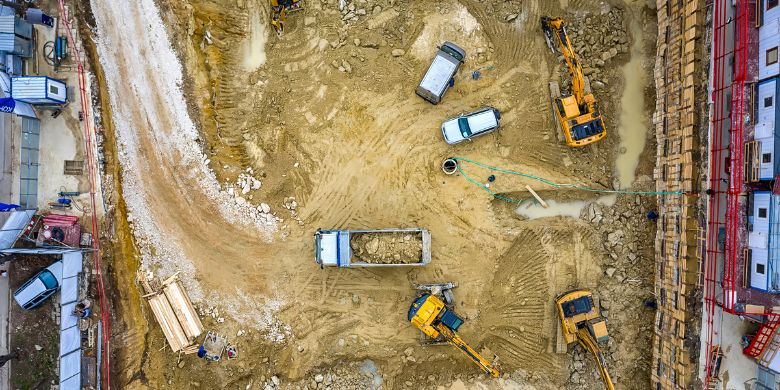
The Significance of Division 34 Standards
As the world continues to urbanize and the demand for efficient transportation systems increases, it is more important than ever to adhere to the standards set out in Division 34. By following these guidelines, construction professionals can make informed decisions about the best design, materials, and techniques to use for their transportation projects. This ultimately leads to robust and efficient transportation systems that promote economic growth and enhance the overall quality of life.
An Overview of Division 34’s Six Main Categories
In the upcoming sections, we will explore the six main categories within Division 34, delving into their specific components and applications. These categories include:
- 34 10 00 – Guideways and Stationary Rail Systems
- 34 20 00 – Vehicles
- 34 30 00 – Monorails and Special Trackwork
- 34 40 00 – Transportation Signaling and Control Systems
- 34 50 00 – Transportation Fare Collection Equipment
Stay tuned for the following sections of this blog, where we will dive deeper into each category and discuss their relevance in the transportation industry. By understanding these categories, construction professionals can ensure they are equipped with the knowledge and tools required for success in their transportation projects.
Category 34 10 00 – Guideways and Stationary Rail Systems
In this section, we will dive into the specifics of category 34 10 00, which encompasses guideways and stationary rail systems. These systems are pivotal in providing efficient and reliable transportation services for urban areas and beyond. We will cover the following key aspects:
Types of Guideways and Their Applications
There are several types of guideways utilized in transportation systems, each with its unique advantages and applications. Some common examples include:
- Elevated guideways: These are built above ground level, often in urban areas, to save space and avoid traffic congestion. Elevated guideways are used for monorails, light rail transit, and dedicated bus lanes.
- At-grade guideways: These are built at ground level and are often cheaper to construct than elevated guideways. They are commonly used for light rail transit, trams, and bus rapid transit systems.
- Underground guideways: These guideways are built below ground level, typically in tunnels, to minimize disruption to existing infrastructure and save space in densely populated areas. Underground guideways are widely used for subways and metro systems.
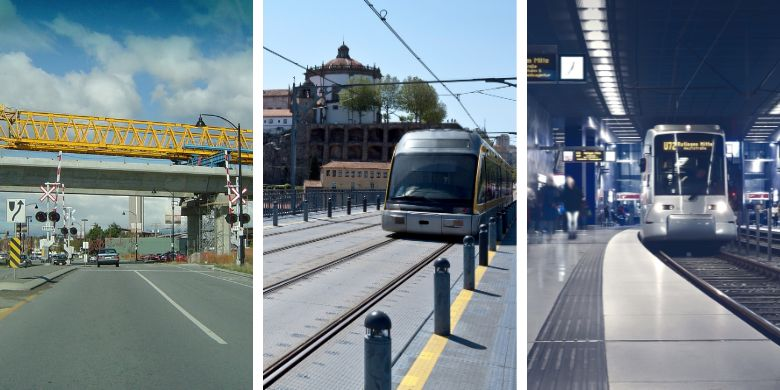
Importance of Proper Design and Construction
Developing efficient and safe guideways and stationary rail systems is critical to the success of any transportation project. Proper design and construction can help prevent accidents, reduce delays, and ensure smooth operations. Factors to consider during the design process include alignment, track type, and structural support. It is crucial to follow standardized guidelines and adhere to local regulations for optimal results.
Materials, Components, and Methods
A variety of materials and components are used in the construction of guideways and stationary rail systems. Some common materials include steel, concrete, and pre-stressed materials. Components such as rails, fasteners, sleepers, and switches are vital for the proper functioning of these systems. Innovative construction methods, such as precast segmental construction and the top-down method, can increase efficiency and reduce the impact on surrounding areas.
Real-World Examples
Several successful guideway and stationary rail system projects have been implemented globally. Some notable examples include:
- Dubai Metro: One of the world’s longest fully automated metro networks, featuring both elevated and underground guideways.
- Singapore Mass Rapid Transit (MRT): A comprehensive urban rail system that utilizes elevated, at-grade, and underground guideways to connect various parts of the city.
- Los Angeles Metro Rail: A rapid transit system that includes several light rail and subway lines, featuring a mix of elevated, at-grade, and underground guideways.
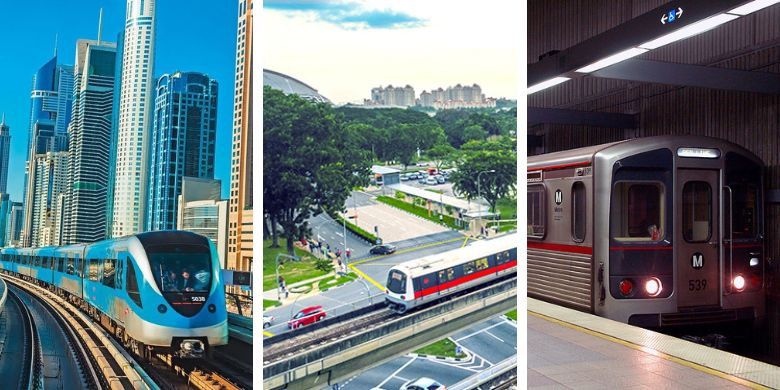
In conclusion, guideways and stationary rail systems are essential components in the realm of transportation, particularly in urban settings. Proper design, construction, and adherence to standardized guidelines can lead to highly efficient, safe, and reliable transportation systems that improve the overall quality of life for residents and visitors alike.
Category 34 20 00 – Vehicles
In this section, we will dive into category 34 20 00, which encompasses the broad range of vehicles in the transportation sector. As a construction specification expert, it’s crucial to understand the integral role of transportation vehicles in supporting an efficient and sustainable transportation system. We’ll explore various types of vehicles within the scope of Division 34, factors to consider when designing and specifying vehicles for a project, and examples of innovative and energy-efficient vehicle designs currently in use.
Types of Vehicles within Division 34
Division 34 covers several types of transportation vehicles, including:
- Buses: Public transit buses, school buses, and shuttle buses are essential for moving large groups of people within and between urban and suburban areas.
- Trains: Commuter trains, subways, and light rail systems are often used in densely populated cities to accommodate high volumes of passengers and minimize traffic congestion.
- Trams: Also known as streetcars, trams provide an eco-friendly and efficient transportation solution, particularly in historic or tourist-heavy areas.
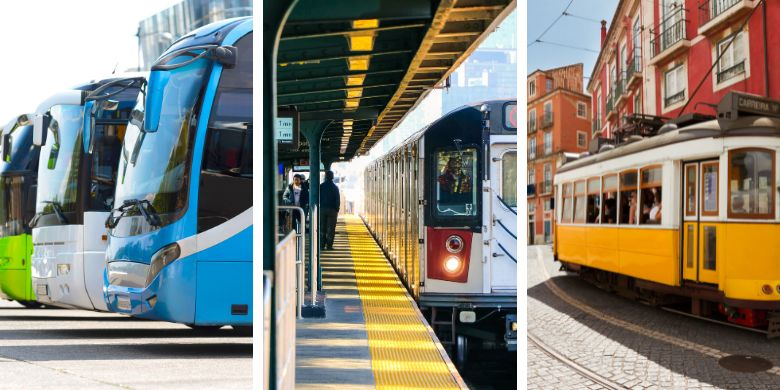
Design Considerations for Transportation Vehicles
When specifying transportation vehicles, there are several factors to consider. Some of the most important include:
- Accessibility: Ensuring that vehicles can accommodate passengers with disabilities, including those with mobility impairments, visual impairments, and hearing impairments.
- Sustainability: Selecting vehicles with the least environmental impact, such as electric-powered buses or trams, and incorporating recycled materials into their construction.
- Comfort: Providing ample seating, proper ventilation, and smooth suspension systems to make daily commutes more enjoyable for passengers.
- Maintenance: Choosing vehicles with low maintenance requirements, which can lead to more cost-effective and efficient operation.
Examples of Innovative and Energy-Efficient Vehicle Designs
Several innovative and energy-efficient vehicle designs have emerged in recent years. Some notable examples include:
- Electric Buses: Many cities around the world have started to replace their traditional diesel-fueled buses with electrically powered alternatives. These innovative vehicles produce zero emissions and significantly reduce noise pollution. They also have lower operating costs and require less maintenance, making them an attractive option for public transit agencies looking to improve their sustainability efforts.
- Hydrogen-Powered Trains: Hydrogen fuel cell technology is being explored as an alternative to diesel-powered trains, reducing greenhouse gas emissions and providing a more sustainable transportation solution. Alstom’s Coradia iLint, the world’s first hydrogen-powered train, has already been tested and implemented in Germany as an eco-friendly alternative to diesel-powered regional trains.
- Autonomous Trams: Siemens Mobility and its partners have developed an autonomous tram system in Potsdam, Germany. The self-driving tram uses sensors, cameras, and artificial intelligence to navigate its route while ensuring passenger safety. This cutting-edge technology has the potential to revolutionize the way we think about public transportation.
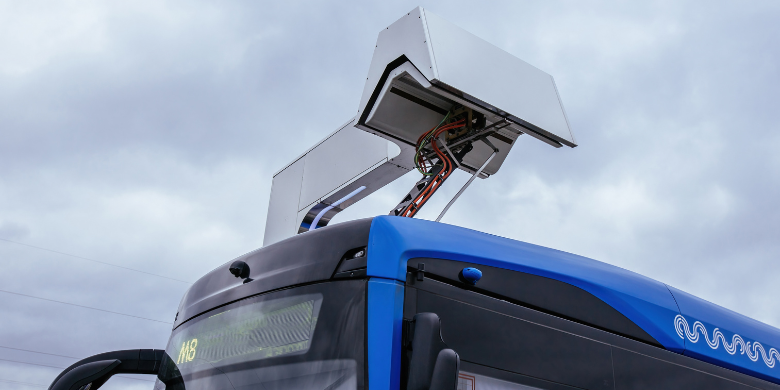
In conclusion, category 34 20 00 plays a vital role in shaping the future of transportation, as vehicles are the backbone of the industry. As a construction specification expert, understanding these vehicle types, their design considerations, and innovative examples will help ensure a successful transportation project. Keeping accessibility, sustainability, comfort, and maintenance in mind will result in more efficient, eco-friendly, and user-friendly transportation systems that meet the needs of our ever-evolving society.
Category 34 30 00 – Monorails and Special Trackwork
In this section, we’ll explore the essentials of category 34 30 00, which encompasses monorails and special trackwork. This category is a vital aspect of transportation construction due to its unique approach to urban mobility and space usage. The primary focus areas of this section include:
The Advantages of Monorails in Urban Environments
Monorails offer numerous benefits in densely populated urban settings, such as:
- Efficient use of space, as they require a smaller footprint compared to conventional railways.
- Reduced traffic congestion and pollution by providing an alternative to automotive transportation.
- Cost-effectiveness due to lower construction costs and less land acquisition.
- Aesthetic appeal because of their sleek, modern design and minimal impact on surroundings.
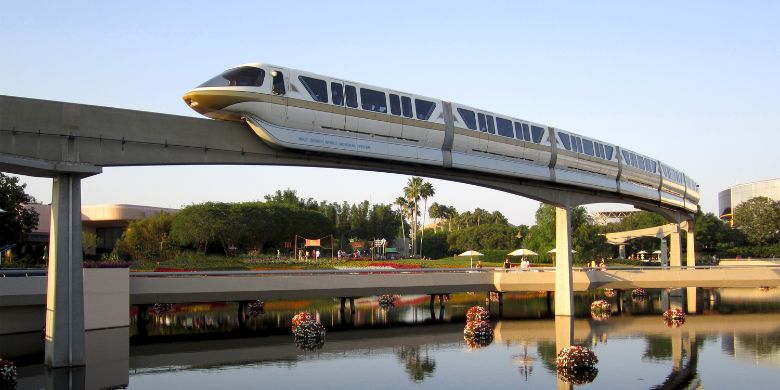
Types of Special Trackwork and their Applications
Special trackwork is an integral aspect of railway construction, as it contributes to efficient, safe, and reliable operations. A few examples of special trackwork include:
- Switches, which enable trains to move from one track to another.
- Crossovers, which allow trains to change tracks or reverse direction.
- Diamonds, where two tracks intersect, allowing trains to cross paths without interrupting each other’s movement.
- Turnouts, which enable trains to divert from their original track safely.
Design Considerations for Monorail and Special Trackwork Projects
When planning a monorail or special trackwork project, several factors must be considered, such as:
- Local geography and land availability.
- Projected ridership and capacity requirements.
- Future expansion or modifications to the system.
- Interoperability with other transportation modes.
- Environmental and social impact.
Examples of Successful Monorail and Special Trackwork Projects
Monorail and special trackwork systems have been successfully implemented in various cities worldwide. Notable examples include:
- The Seattle Center Monorail in the United States, which has been in operation since 1962 and connects downtown Seattle to the Space Needle.
- The Tokyo Monorail in Japan, which provides a crucial link between Haneda Airport and the city center.
- The São Paulo Monorail in Brazil, which connects the Congonhas Airport with the São Paulo Metro system.
- The Kuala Lumpur Monorail in Malaysia, an essential component of the city’s public transportation network.
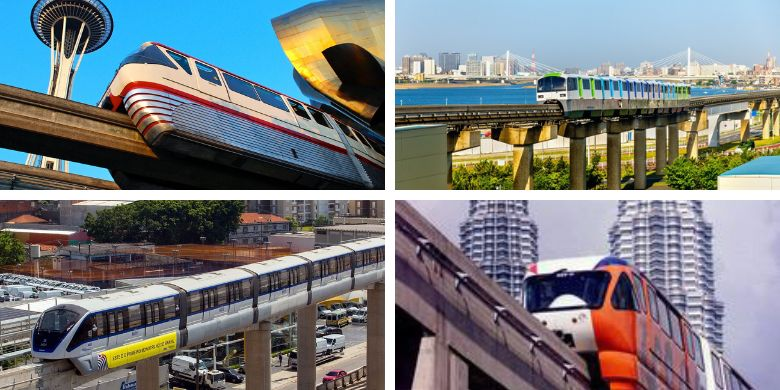
Overall, monorails and special trackwork play a significant role in enhancing urban mobility and functionality. These systems offer unique advantages in densely populated areas, making them a vital element in the ever-evolving transportation sector. By adhering to the guidelines of category 34 30 00, construction professionals can ensure their projects are successful, safe, and efficient.
Category 34 40 00 – Transportation Signaling and Control Systems
In this section, we will explore category 34 40 00, which encompasses transportation signaling and control systems. A critical aspect of any efficient transportation network, these systems contribute significantly to the overall reliability, safety, and smooth operation of transport infrastructure. With advancements in technology, signaling, and control, systems are continually evolving, enabling more sophisticated and efficient management of transportation networks.
The Importance of Signaling and Control Systems
Transportation signaling and control systems are vital for ensuring the smooth and safe operation of various transport modes, including rail, road, and air. They regulate traffic flows, optimize travel times, and help prevent accidents by providing real-time information and communication between vehicles, infrastructure, and operators. As transportation networks become increasingly complex and interdependent, the need for advanced signaling and control systems becomes more apparent.
Types of Signaling and Control Systems
There are numerous types of signaling and control systems in use within the transportation industry. Some of the most common include:
- Traffic Signals: These systems control the flow of traffic on roads, intersections, and pedestrian crossings by regulating the right of way using traffic lights and signs.
- Train Control Systems: For railway networks, train control systems provide safe and efficient train operation by managing track occupancy, routing, and speeds.
- Automated Guideway Transit Systems: These systems involve the use of automated vehicles on dedicated guideways, typically for urban transit applications. Signaling and control systems ensure safe, efficient operation by managing vehicle movements, routing, and synchronization with stations.
Design Considerations for Signaling and Control Systems
When designing and implementing signaling and control systems, several key factors must be considered to ensure optimal performance. These include:
- Compatibility with existing infrastructure and systems.
- Reliability, redundancy, and fault tolerance to minimize service disruptions and maintain safety.
- Scalability and flexibility to accommodate future growth, technological advancements, and changing requirements.
- Security measures to protect against cyber threats and unauthorized access.
- Integration with other systems, such as communication networks, surveillance systems, and operations centers.
Advanced Signaling and Control Systems in the Transportation Industry
Today, innovative signaling and control systems are being deployed worldwide to enhance the efficiency and safety of transportation networks. Some notable examples include:
- Communication-Based Train Control (CBTC): A state-of-the-art train control system that uses wireless communication between trains and trackside equipment to enable real-time monitoring, precise train positioning, and optimal utilization of track capacity.
- Intelligent Transportation Systems (ITS): A broad range of technologies and systems designed to improve traffic management, vehicle safety, and driver experience on road networks, including adaptive traffic signal control, real-time traffic information, and collision avoidance systems.
- Next-Generation Air Traffic Control Systems: New systems, such as the FAA’s NextGen and Europe’s SESAR initiative, that leverage satellite-based navigation and digital communication technologies to improve air traffic management efficiency and reduce environmental impacts.
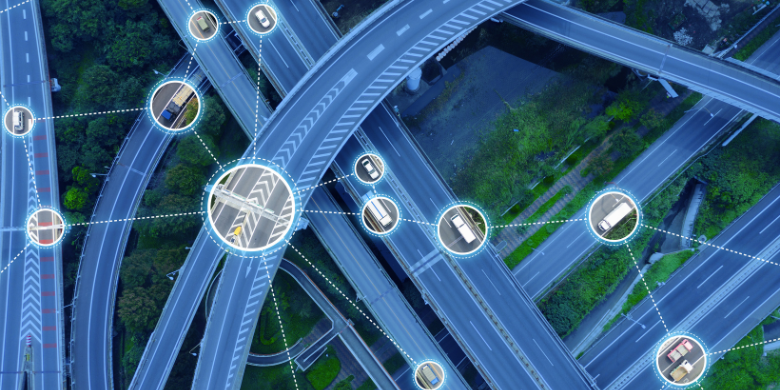
In conclusion, transportation signaling and control systems play a crucial role in maintaining the efficiency, safety, and reliability of transportation networks. By leveraging cutting-edge technologies and design practices, these systems are continually evolving to meet the growing demands placed on modern transport infrastructure. Staying informed and adapting to these advancements can make all the difference in ensuring the success of your transportation projects.
Upgrade Your Building Security
Get in touch with a Swiftlane specialist for more information on the best access control and video intercom solution for your building.




